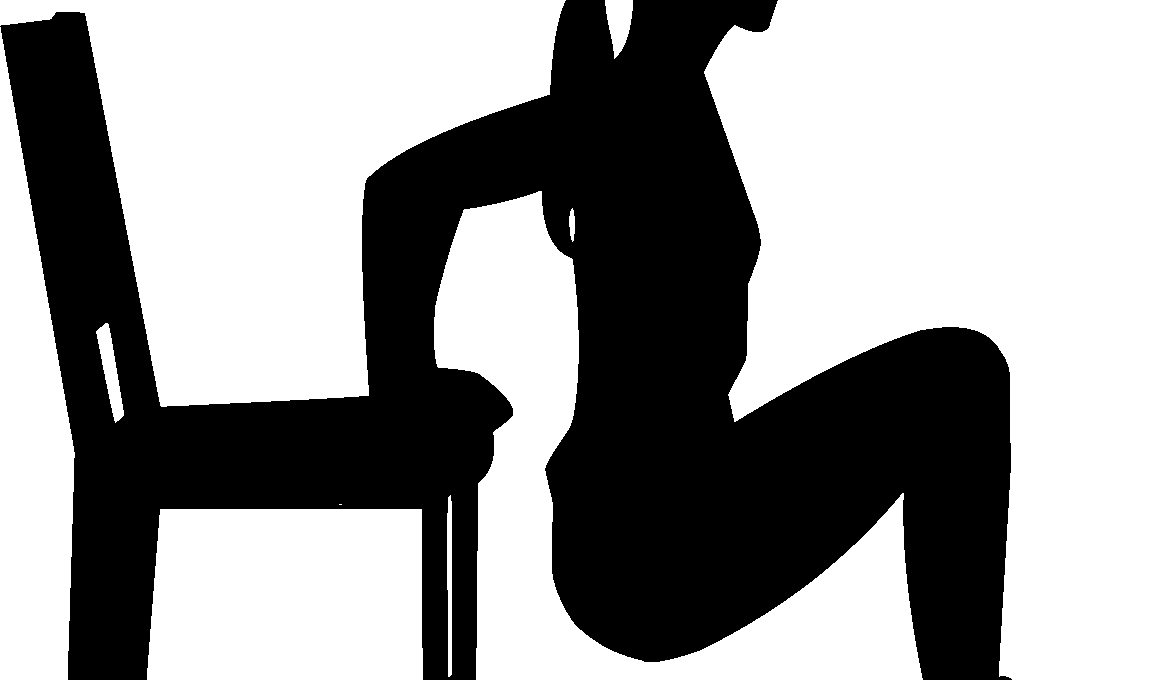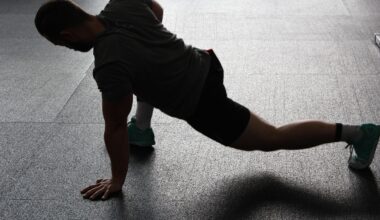Chair-Based Stretching Techniques to Reduce Senior Stiffness
As individuals age, they often experience increased stiffness and decreased flexibility. Chair-based stretching techniques can help seniors maintain their mobility and overall well-being. These exercises are designed specifically for limited mobility seniors, requiring minimal effort. By utilizing a sturdy chair, seniors can safely perform various stretching routines without fear of falling or straining their muscles. Gentle stretches can improve blood flow, alleviate tension, and enhance flexibility. It is crucial for seniors to engage in regular stretching exercises. According to experts, stretching can make daily activities more manageable and improve posture. Incorporating simple chair exercises into their routine helps seniors stay active and engaged in life. These exercises can easily be personalized based on individual needs and capabilities. It’s essential to consult a healthcare professional before starting any exercise regimen to ensure safety and effectiveness. Let’s explore some practical stretching techniques that can easily fit into daily routines and promote a healthier, more active lifestyle. Consistency is key to enjoying the benefits of these exercises in reducing stiffness and enhancing mobility.
Benefits of Chair Exercises
Chair exercises offer numerous benefits for seniors dealing with stiffness. They are specifically tailored to improve flexibility, balance, and strength. By engaging in daily chair-based stretches, seniors can enhance joint mobility and alleviate discomfort. Improved flexibility enables seniors to perform routine tasks more efficiently. Strengthening muscles is crucial for maintaining functional independence. With chair exercises, seniors can undertake physical activity safely, minimizing the risk of falls and injuries. Stretching can also prevent muscle stiffness by promoting relaxation and enhancing blood circulation. The art of relieving tension through stretching helps reduce stress, leading to improved mental well-being. Incorporating these exercises invites social interaction and camaraderie among seniors when performed in groups. Additionally, chair exercises can be adapted to fit any level of mobility, making them accessible for everyone. This flexibility allows seniors to progress at their own pace. Chair exercises can be performed at any time of day, fitting seamlessly into one’s routine. They may be incorporated during TV time or while chatting with family and friends. By making chair exercises enjoyable, seniors will be more likely to maintain their practice consistently.
Key stretches can be utilized to target common areas of stiffness. These include the neck, shoulders, back, and legs. Simple neck rolls can ease tension while improving mobility. Shoulder shrugs can relieve tightness in the upper body. These exercises can be performed by raising the shoulders toward the ears, holding, and releasing. Gentle seated twists are effective for enhancing spinal flexibility. By holding the chair’s backrest and gently turning, seniors can awaken their core muscles. Additionally, seated hamstring stretches are essential for maintaining leg flexibility. Placing one leg straight and leaning forward gently stretches the hamstring muscles. Arm stretches can also be incorporated by lifting arms overhead and leaning side to side. These stretches should be held for 15-30 seconds while breathing deeply. Practicing mindfulness during stretches can enhance their effectiveness. As seniors perform these stretches, they should focus on their breathing and listen to their body. Recognizing pain versus discomfort is crucial to avoid injury. Adjustments can be made to accommodate personal needs. The incorporation of music or nature sounds can enhance the experience, promoting relaxation and enjoyment.
Frequency and Consistency
For maximum benefits, it is recommended to perform chair exercises regularly. Ideally, seniors should aim for at least three to five times a week. This frequency helps establish a routine that leads to lasting improvements in flexibility. Consistency is essential to see progress and alleviate stiffness. Setting a specific time each day for stretching can create a habit that becomes part of the daily routine. It may be beneficial to perform the stretches in the morning to prepare the body for the day ahead. Alternatively, stretching in the evening can help wind down and promotes relaxation before bedtime. Encourage seniors to keep a stretching log to track their progress and achievements. This can be a simple checklist where they mark off completed sessions. Creating an inviting atmosphere for stretching sessions enhances the experience. Utilizing comfortable clothing, a well-lit space, and soothing music can create a calming environment. Family members can also participate, making stretching a fun and interactive activity. Group sessions can be organized, promoting social interaction while achieving personal fitness goals. Engaging in chair exercises together establishes camaraderie among peers.
Safety is a top priority when it comes to chair exercises. Ensuring the chair is sturdy and stable is crucial to prevent accidents. Seniors should avoid chairs with wheels or any unstable designs. It’s essential to practice caution when transitioning between positions. Pacing oneself during stretching is vital to prevent injury and overstretching. Assistance from caregivers or family is recommended for individuals requiring extra support. Starting slowly and gradually increasing the intensity is key to building endurance. Seniors should always listen to their body and stop immediately if they experience pain. Modifications can be made to exercises depending on mobility restrictions. Props such as resistance bands or stretch straps can enhance effectiveness. Warm-up prior to stretching is suggested to prepare the muscles, which can include simple ankle and wrist rotations. Hydration before and after exercising helps maintain overall wellbeing. Having a water bottle nearby may encourage seniors to drink fluids. This contributes to muscle recovery and keeps joints lubricated. Knowledge of proper techniques reduces the risk of injury. Educational resources, such as books or videos, can provide valuable guidance on chair exercises for seniors.
Incorporating Mindfulness into Stretching
Mindfulness can enhance the chair stretching experience significantly. By being present during stretching, seniors can cultivate awareness of their bodies. Focusing on breathing allows for deeper relaxation and reduces stress. Practice deep belly breathing while performing stretches to experience a sense of calm. This can also lead to improved concentration on the movements, making them more effective. Visualization is another aspect to consider; seniors can picture movements flowing smoothly. Creating a positive mindset surrounding stretching can also boost motivation and perseverance. Recognizing the progress made, no matter how small, encourages continued practice. Incorporating guided imagery or breathing exercises may create deeper connections between mind and body. This connection enhances relaxation and overall effectiveness of the stretching session. Mindful stretching can also promote self-compassion, aiding emotional healing. Reflecting on the day’s achievements can help reinforce feelings of accomplishment. Keeping a stretching journal where seniors can express thoughts and feelings about their progress aids in self-reflection. This cultivates a positive attitude towards exercise and enhances overall well-being. Mindfulness practices can offer profound benefits that significantly improve physical and mental health.
In conclusion, chair-based stretching techniques provide a valuable avenue for seniors to combat stiffness and improve mobility. By incorporating these exercises into their daily routine, seniors can cultivate greater flexibility and overall well-being. Participation in regular stretching sessions promotes physical health alongside emotional resilience. It’s essential to approach these exercises with patience and mindfulness for optimal success. Engaging in cheerful environments during exercises can further enhance motivation and enjoyment. Families and caregivers play a vital role in supporting seniors’ efforts to maintain a healthy lifestyle. Tailoring routines to individual preferences embraces the uniqueness of every individual and encourages continued participation. As everyone adapts to their practice, they will notice significant improvements in their mobility, posture, and mood. Remember, safety should always be the prime objective to ensure an effective experience. By committing to the practice of chair exercises, seniors can enrich their lives in many ways. Ultimately, the journey towards improved flexibility and reduced stiffness is a personal one filled with opportunities for growth and resilience. Therefore, let joy guide every stretching session to foster lifelong wellness and happiness.
### Summary
Chair exercises are an essential component of senior fitness, enabling individuals with limited mobility to maintain their health and vitality. The combination of safety, consistency, and mindfulness can transform stretching into a joyful routine. Therefore, seniors should embrace these techniques as tools for enhancing their quality of life, promoting overall well-being. Embracing each stretching session allows seniors to discover the joys of movement, committed to enhancing their physical and mental health.


